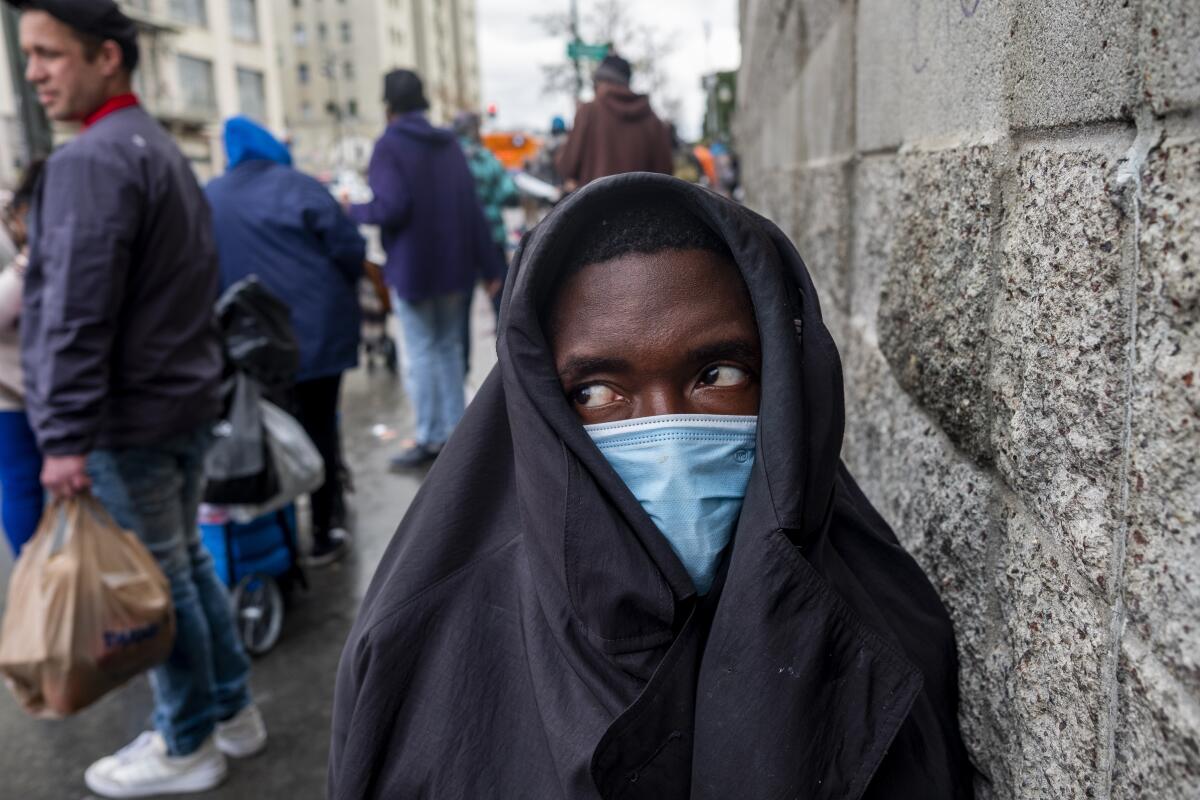How to help unhoused Angelenos during the colder months

- Share via
While we may not mark our seasons with the traditional changes in weather like other parts of the country do, the Golden State isn’t always sunny and 70 degrees, as anyone who lives here can attest.
In 2019, The Times reported that more people in L.A. experiencing homelessness had died at least partly because of the cold than in San Francisco and New York combined.
As temperatures begin to drop and storms roll in, here’s how Angelenos can help support one of the city’s most vulnerable populations.
Sharing is caring
Extremes on either end of the thermometer can pose serious threats to the health and well-being of those who are experiencing homelessness.
Cat Kim, board director for the SELAH Neighborhood Homeless Coalition, said you can provide desperately needed help just by sharing any extra winter-specific items you might have. You can keep them in your car to give to homeless people you see or bring them to nonprofits, such as SELAH, for distribution.
Items needed include:
- Beanies or warm hats
- Winter gloves
- Thick socks (preferably wool, they’re good at wicking moisture)
- Warm blankets
- Warm jackets
- Closed-toe shoes
- Hand-warming packs
- Tarps and tents
Los Angeles County reopened its winter shelters Nov. 1. They will remain open 24 hours a day until March 31, 2022, but space is limited.
According to the Los Angeles Homeless Services Authority, there were 66,436 homeless people in the county in 2020. The county currently has only 433 beds available in its winter shelters.
Ahmad Chapman, director of communications for LAHSA, said the number is expected to increase in the coming months. Additional shelters can be opened, he said, if weather conditions require it.
During periods of extreme heat, the county operates cooling centers to offer refuge from the sweltering temperatures. But when it comes to periods of extreme cold and inclement weather, said Jeanne O’Donnell, program manager of the L.A. County Office of Emergency Management, the issue isn’t providing brief periods of respite but rather overnight shelter.
It’s not just a winter issue
People’s basic needs don’t change with the seasons. And among people experiencing homelessness, what’s always in too short supply are food, water and hygiene products, Kim said.
Donors should focus on providing foods that are rich in carbohydrates, vitamins and protein, she added. Access to these important nutrients is limited for unhoused people.
Other helpful contributions include:
- Soft foods, because of a lack of access to regular dental care
- Fresh fruit, especially varieties that are easy to transport and store, such as bananas
- Drink powders, such as Emergen-C, that provide electrolytes and support for the body’s immune system
- Hygiene kits that include body wipes and face masks to protect against COVID-19
What else you can do
While supplies are needed and appreciated, Mayer Dahan, founder of the Dream Builders Project, a nonprofit that assembles and distributes care packages to homeless people, said that those are just a first step.
Whether you get involved with advocacy work or simply walk out your front door and find the first person you can help, he said, communities need to mobilize to support each other.
SELAH’s Kim suggested holding a supply drive in your neighborhood. Mutual aid organizations and nonprofits are more than happy to take your donations if you’re not comfortable approaching people on your own.
“Helping people is human nature,” Dahan said. “We’re a country of great wealth and we need to find the space to give back.”
More to Read
Sign up for Essential California
The most important California stories and recommendations in your inbox every morning.
You may occasionally receive promotional content from the Los Angeles Times.







